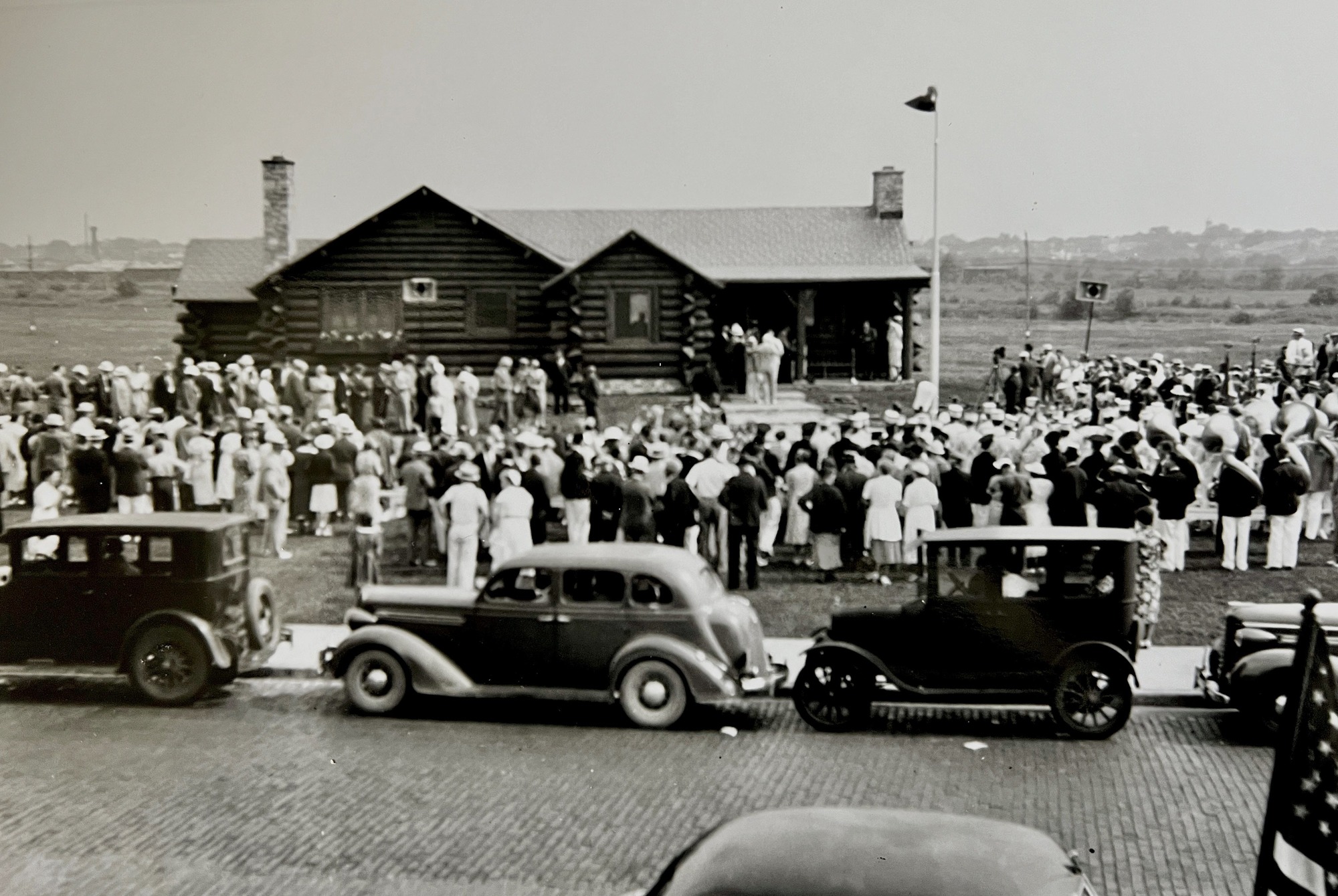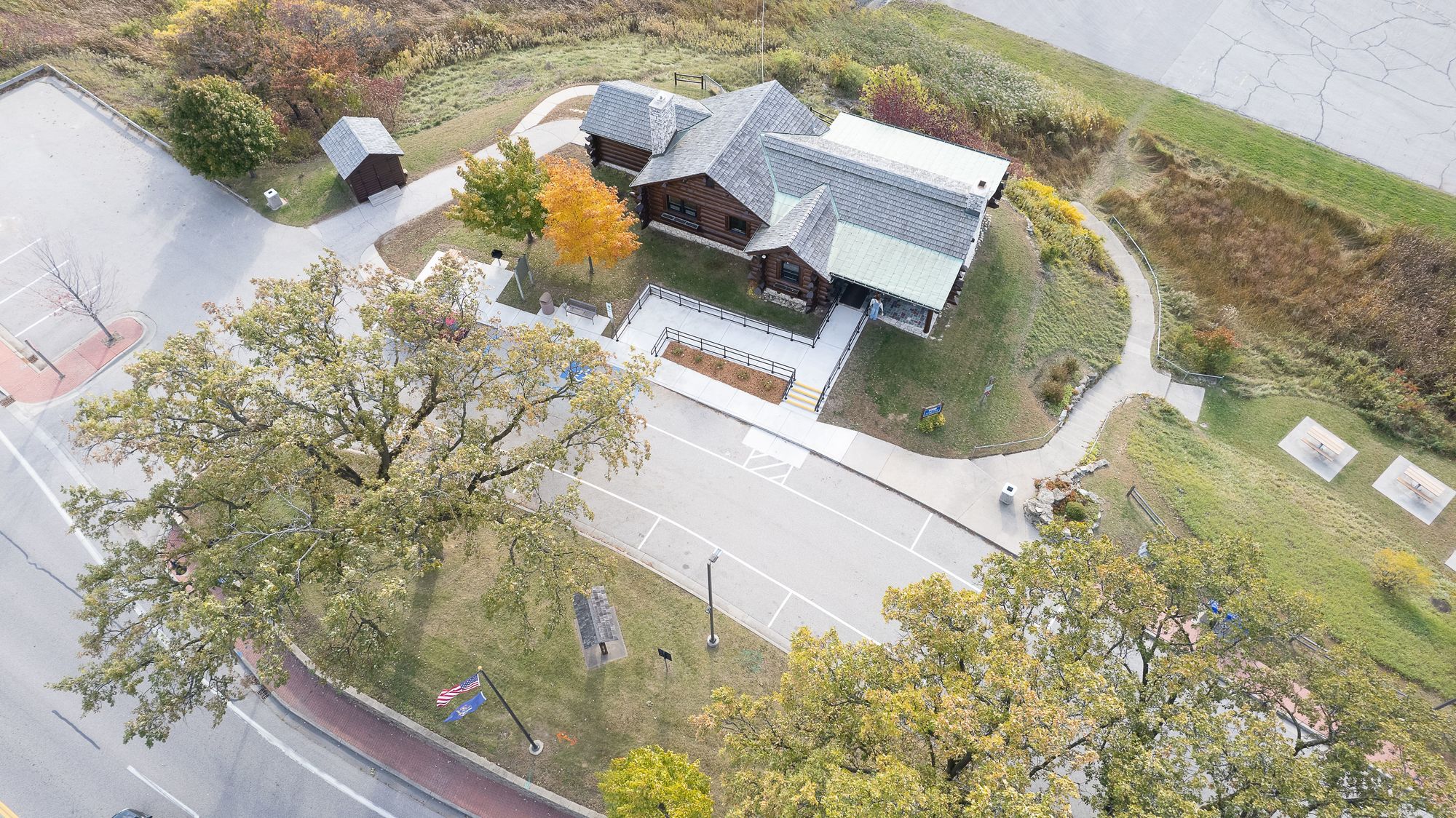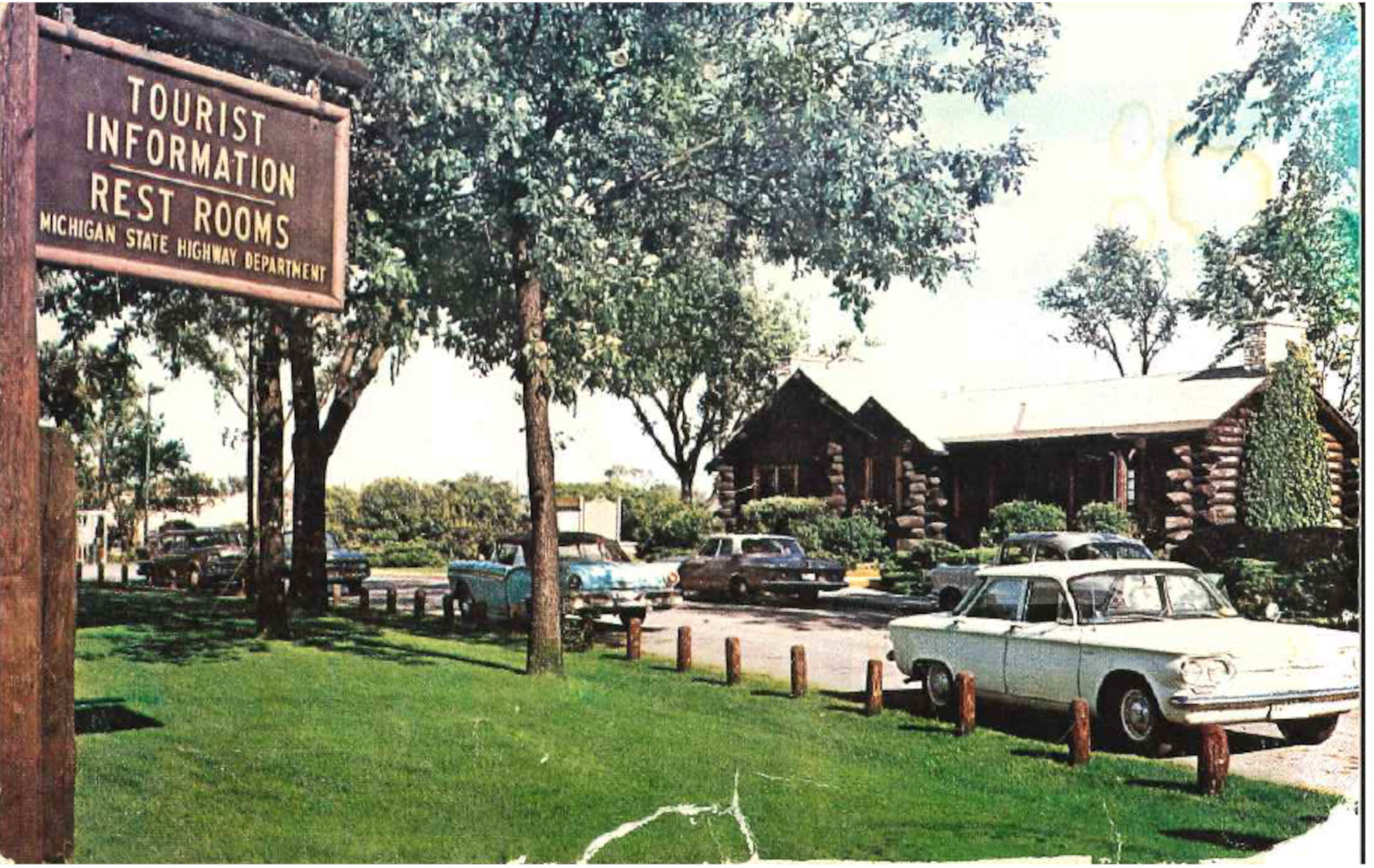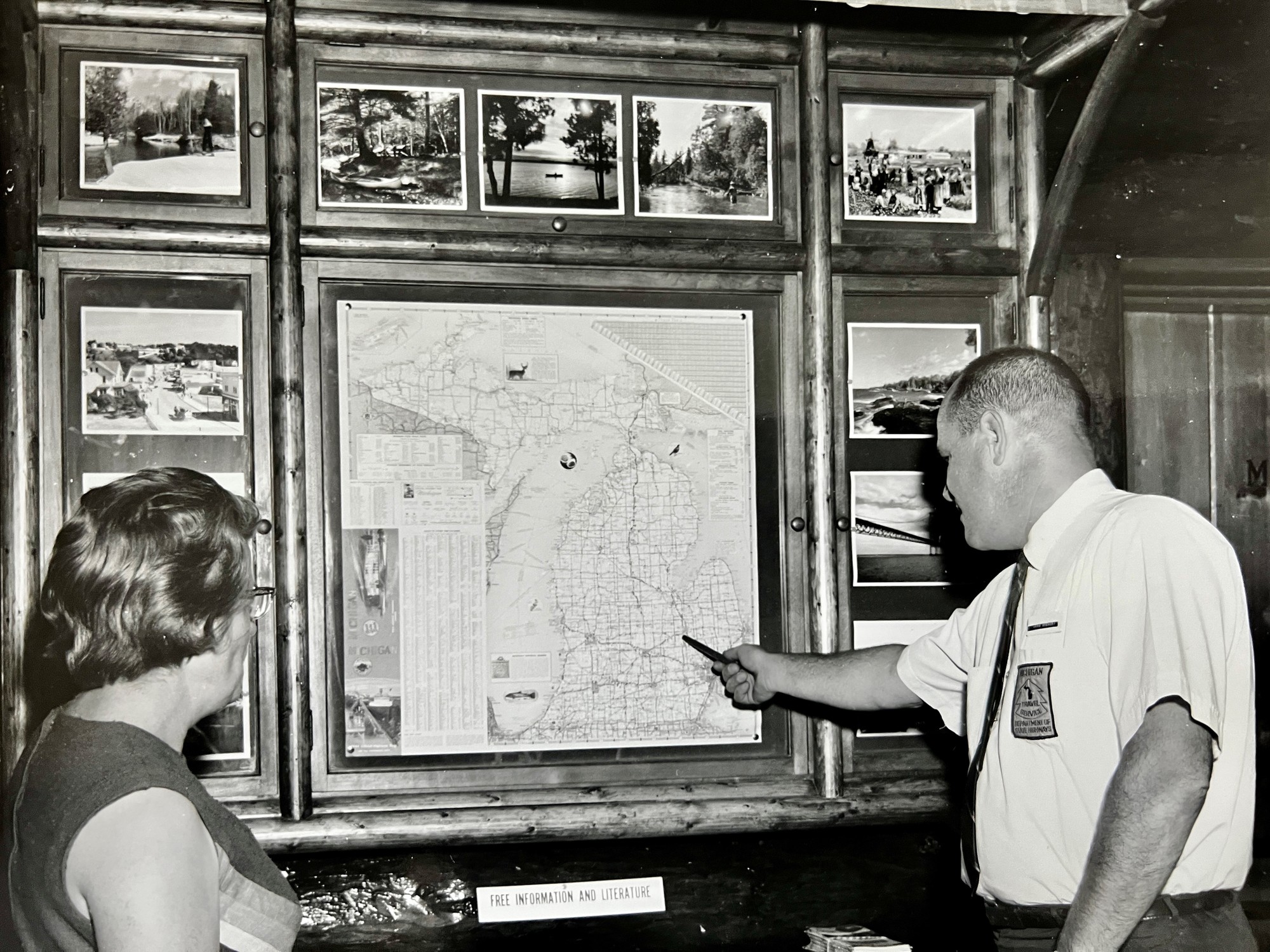Menominee Welcome Center continues long history of hospitality
Michigan DOT sent this bulletin at 01/10/2023 01:05 PM EST

|
|
Having trouble viewing this email? View it as a Web page. |
FOR IMMEDIATE RELEASE MEDIA CONTACT
January 10, 2022 Dan Weingarten
906-250-4809
WeingartenD@Michigan.gov
Menominee Welcome Center
continues long history of hospitality
MENOMINEE, Mich. - Traveling north across the bridge between Marinette, Wisconsin, and Menominee, Michigan, one of the first sights you'll see after the sign welcoming you to "Pure Michigan" is a rustic log building tucked behind a row of trees just off a busy commercial stretch of US-41. Dedicated folks working in this unassuming structure have been greeting and informing visitors for 85 years.
The building housing the Michigan Department of Transportation (MDOT) Welcome Center opened in July 1937. Listed on the register of Michigan State Historic Sites, it is thought to be one of the oldest tourist information facilities in the U.S. The current Welcome Center manager, Vivian Haight, has worked there regularly since the late 1990s and has become the curator of the building's legacy.
"Visitors tell me this place really captures the Upper Peninsula's rustic, outdoor vibe," Haight said. "Guests comment about the smell of wood and paper and say it reminds them of a family cabin."
Some people ask if it can be bought or wonder if it was once someone's home.
"Our staff is asked almost daily about the history of the building," Haight said.
It's a rich history. Travel information centers were new features on U.S. highway roadsides when construction started on the building in 1936. The original Menominee "Tourist Lodge" at the site was built under the direction of Murray D. Van Wagoner, the legendary Michigan state highway commissioner, after one in downstate New Buffalo proved the concept could be successful.
The contractor for the project was the Francis Searles Co. of Pontiac. Civilian Conservation Corps workers from the nearby Wells Camp built the building using the traditional Scandinavian "chinkless" method. Materials were sourced mostly from the U.P. Norway pine logs were from a U.P. state forest, copper for the roof was from U.P. mines, and stone for the fireplace was gathered from area fields.
The building's designer, Anthony Buyczkowski, stayed on at the original lodge after it was completed to greet travelers and pass out literature until a full-time employee was hired. The first manager was Henry Bruemmer. Over the years, many managers have come and gone, the center was operated by the city's chamber of commerce during the WWII years, and the log building deteriorated as weather and age took their toll.
As early as 1949, a team of professors and students from the University of Michigan took some core samples of the logs to check their health. They determined the logs were still sound, although some would have to be strengthened on the exterior or completely replaced. A few original logs were replaced while some were reinforced with the addition of half logs.
It was finally decided in 1981 that the logs had deteriorated too far to make it economically feasible to continue replacing them, so a decision was made to rebuild the entire building. The new structure would be built on the same foundation as the old lodge with an addition to the south end to increase the inside dimensions and offer more lobby space.
An MDOT announcement in December 1981 sought bids for rebuilding the "oldest active travel information center in the U.S." from contractors "experienced in using a method requiring hand-fitting each log" to replicate the original construction style. A Menominee contractor, Alfredson Brothers, was the low bid and was awarded the contract with several sub-contractors. Handcrafted Log Homes of Atlantic Mine, Michigan (no longer in business) built the building. The new log building used the original's Scandinavian chinkless construction, which was common in the upper Great Lakes.
The building was completed in late spring 1983 and was back in operation in late June of that year. The original doors, windows, fixtures, fireplace mantel, and slate floor were re-used in the reconstruction. Some 500 Norway (red) pine and white pine logs ranging from 13 to 22 inches in diameter were used. MDOT maintenance crews sourced the pine logs from MDOT rights of way through state forestland near L'Anse, Baraga, and Amasa.
The pine construction was appropriate, Haight noted, as Menominee was at one time the leading white pine shipping port in the entire nation.
Much of the furniture and fixtures were retained from the original building. The desk, log holder, chaise lounge, and map case were made by Rittenhouse, a well-known furniture maker in Cheboygan. Made in the 1930s and 1940s, they are now considered antiques.
The dedication for the new Menominee Travel Information Center took place nearly 40 years ago on July 12, 1983, and Haight joined the staff a few years later. She worked at the center during college in the late 1980s and said she told the assistant manager, "Someday, I would like (her) job."
After she graduated from college, Haight worked in the area then became an at-home mom. Then a call came from Pat Mallgren, the assistant manager, asking if Haight was interested in working part time at the Welcome Center. In September 1996, she was hired. Shortly after that, Bob Bates, the longtime manager retired, then Mallgren retired, leaving Haight, one maintenance person, and summer helpers to run the center.
"I would like to think that once Bob and Pat rehired me, then retired, that they entrusted me to take care of the building that Bob, especially, worked so hard to preserve after going through its rebuilding in 1982-1983," Haight said.
Haight said she had a lot to learn about maintaining a log cabin.
"I've seen almost every aspect of the building replaced, rebuilt, or repaired," Haight said. "I've been involved in roofing replacement discussions, replacement windows, plumbing heating, cooling, and most recently the American with Disabilities Act upgrades."
Haight said she is very protective of the building and sensitive when it comes to changes.
"I wanted the finished result to not interfere with the up north feel of the building," she explained.
"When guests enter our center, we hear wonderful comments," Haight said. "Someone this past summer said they'd visited Welcome Centers all over the United States and this one is by far the best they'd ever been in."
Today, with its 1980s expansion, newly stained exterior, and other upgrades, the MDOT Menominee Welcome Center still stands proudly, displaying fine craftsmanship and honoring those who appreciated quality.
###
Driving safely in work zones saves lives! Protect MI work zones by taking the pledge.
www.twitter.com/MDOT_UP | www.facebook.com/MichiganDOT | www.youtube.com/MichiganDOT

The building housing the Michigan Department of Transportation (MDOT) Welcome Center opened in July 1937. Listed on the register of Michigan State Historic Sites, it is thought to be one of the oldest tourist information facilities in the U.S. (MDOT photo)

A recent aerial view of the MDOT Menominee Welcome Center.
(Photo courtesy of Happy Hen)

A vintage postcard view of the MDOT Menominee Welcome Center.

MDOT employee John Gregory gives a visitor some information in 1968 at the Menominee Welcome Center. The map case is still in use at the facility. (MDOT photo)

Current MDOT Menominee Welcome Center Manager Vivian Haight has worked there regularly since the late 1990s and has become the curator of the building’s legacy. (MDOT photo)
